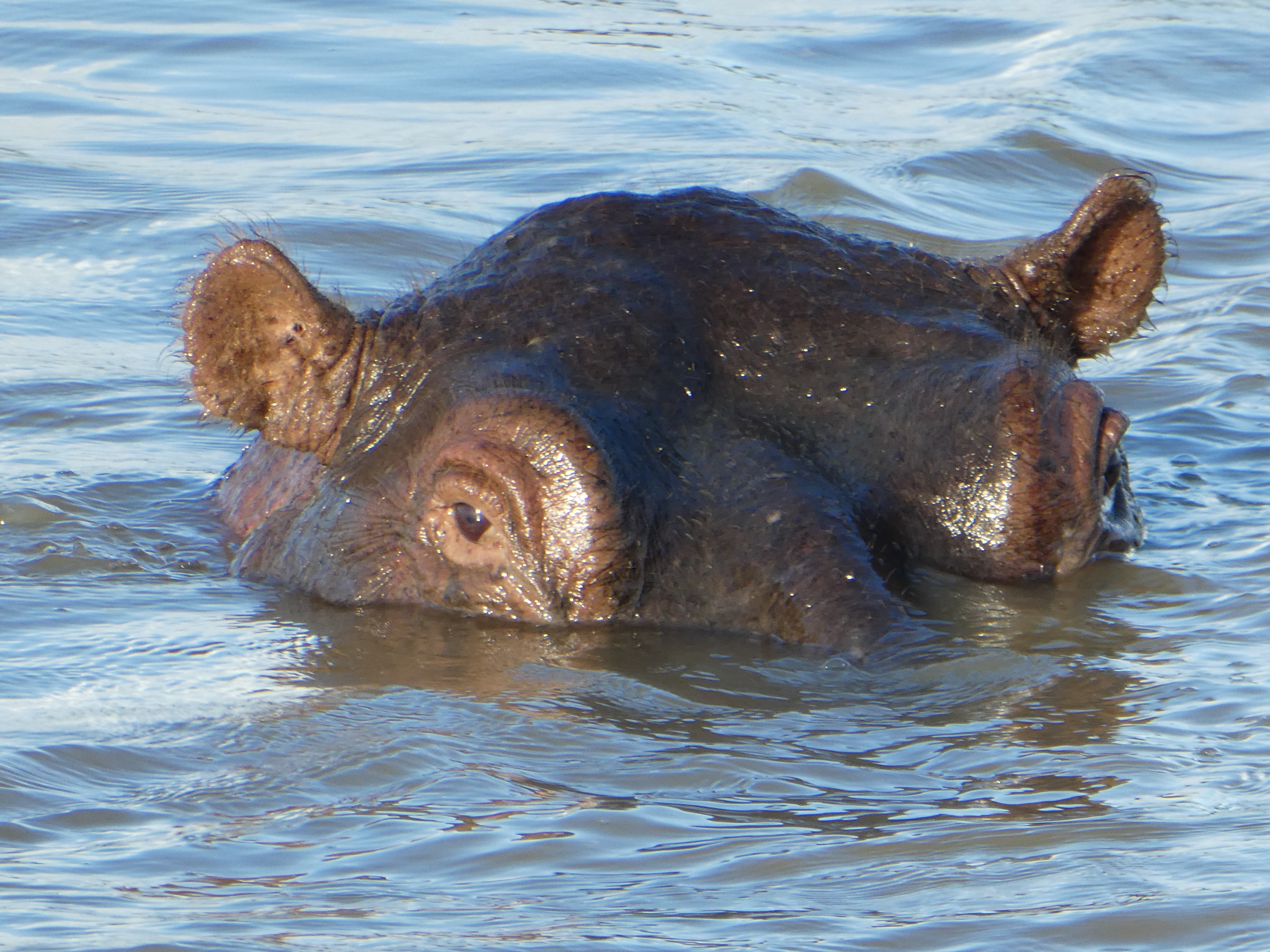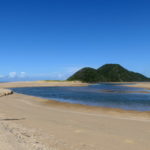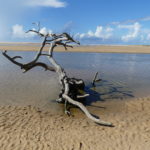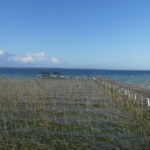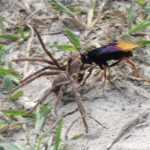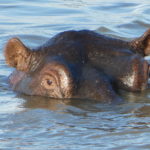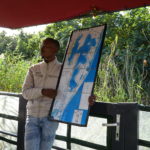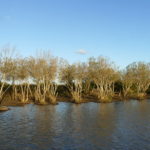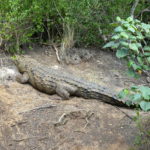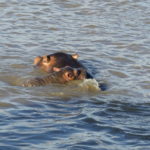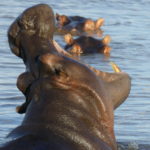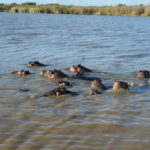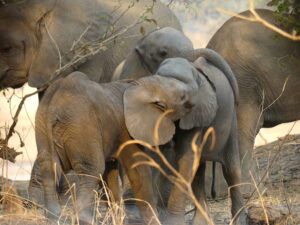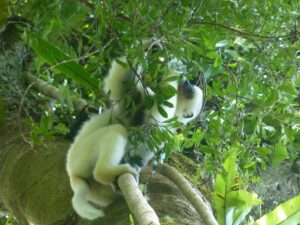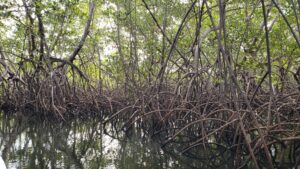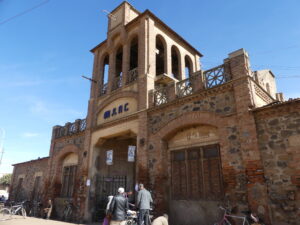The waterways and bays along the coast of eastern South Africa contrast markedly with the inland plains and mountains, almost like another country with its own delights.
Kosi Bay
Kosi Bay is a quiet spot in the northeast of South Africa, a short hop from Mozambique, characterized by lots of water and lots of sand – sandy beaches, sandy roads…and the sandy soil on which we camped. With no electric power and only the glow of phone service at the end of a long rickety jetty projecting from a sandy cove. The bay is really a set of four lakes and interconnecting channels, a gorgeous wetlands flowing into the sea at narrow Kosi Bay mouth.
With the tide rising, we splashed across squooshy sand and temporary lagoons like these to reach the Mouth.
This huge piece of driftwood at the mouth suggest that the area sees strong water flows at times, though the waters were placid when we visited.

We picnicked at this lake just before the mouth of Kosi Bay. It’s heavily fished: the wavy lines are constructed from poles strung together as fencing, with the circular portions designed to trap large fish.
This jetty is a very long rickety construct of boards that emerges from a mangrove section along the sandy shore. After walking delicately across it in the daytime, we could enjoy the cool breezes along this lake on a hot day. At night time, we took advantage of the only mobile phone signal we could find.
Safari-goers hope to see a hunt, with the big cats taking down a prey. We saw a fascinating hunt in miniature right at our campsite. This colorful, tiny insect defeated a spider, and then dragged it for a hundred meters (or yards) over sand, plants and obstacles to its lair.
St Lucia
An evening boat ride along the estuary at St Lucia (UNESCO World Heritage iSimanagalisa National Park) gave us several chances to see hippos and Nile crocodiles. The crocs were still sleeping. So were many of the hippos, but others plodded about the shallow waterway to keep an eye on our boat. We were also excited to watch a one week old baby hippo bobbing up to climb atop its mother.
Signs throughout the town warn about dangerous encounters with hippos at night, on the roads or on trails; they’ve even been known to wander down the main street, perhaps headed to the Hippo Bar. When we went bird watching with a local guide, we found that the birds here were just as plentiful – and not nearly as dangerous.
On the boat, our wonderful guide, Mduh, explained the many ecosystems at St Lucia Estuary – from savanna to wetlands to ocean – and regaled us with stories of woman-eating crocodiles, man-stomping hippos – and the more typical life of these animals.
Mangroves and reeds line the estuary, a lovely sight at sunset.
The largest Nile crocodile we saw en route, though one of many others we could admire.
Its skin was beautifully marked and multi-colored – and it was longer than a basketball player.
Two hippos leave the herd sleeping in the mud and join the others in the water
Our baby hippo sticking close to mama, but struggling unsuccessfully to climb on top.
A yawn big enough to warn passers-by (as the dominant male will do) and perhaps even swallow another hippo or two.
A floating pack of hippos on the estuary
(Also, for more pictures from South Africa, CLICK HERE to view the slideshow at the end of the itinerary page.)


